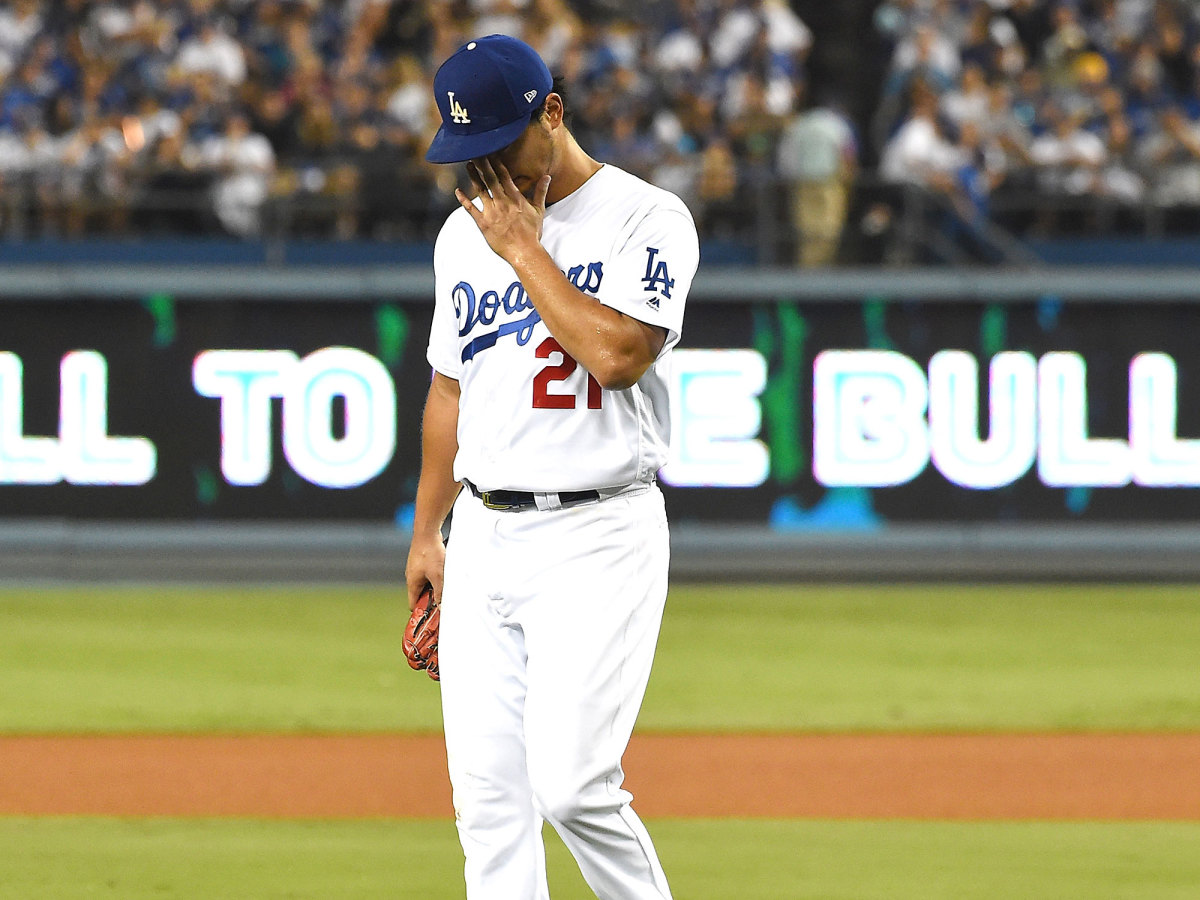Weirdest. Season. Ever: The Dodgers' Potentially Fatal Flaw—And The Teams That Could Exploit It

In 2005, Paul Konerko stood in the World Series-winning clubhouse of the White Sox, talking about how the moment would not have been possible without having to play with urgency in the final two weeks of the season. A 15-game lead on Aug. 1 for Chicago had dwindled to 1 1/2 games with 10 games to play, but the White Sox snapped out of their 25–28 lethargy to win eight of their last 10 games. In the postseason, they tied the 1999 Yankees for the best record of the wild-card era, going 11–1; in their last 22 games, they went 19–3. Konerko said having to win games, and not coast, in the final two weeks inspired the postseason run.
The Dodgers have been coasting for weeks now as they near the end of the weirdest season in baseball history. How in the world could the same team that went 91–36 through almost five full months of play come within a 1–0 win over the Padres on Sept. 1 from losing 17 in a row?
Here’s another view of the oddity: After losing two straight on July 20 and 21, Los Angeles went 25–5 and never dropped consecutive games before falling into a 1–16 spiral that includes both a five-game losing streak and its current 11-game skid. How do you explain that? Coasting, as we shall see, is one big part of it. Here is a bigger one.
1. High fastballs are their Kryptonite
The Dodgers love to hit the ball in the air. The Mets and the Padres, both well under .500, are the only teams in the league that hit a greater percentage of fly balls than Los Angeles.
The way to combat fly-ball hitters, who love to hit the bottom third of the ball, is to attack with velocity up in the zone. The Dodgers this year have seen a greater percentage of four-seam fastballs than any team in baseball (40.5%), and they rank 23rd against those pitches in batting average (.262).
If we look at only high four-seamers, L.A. is the fifth-worst team in baseball (.195), behind only the Brewers, Rays, Mets and Cubs (the league average is .228).
As Indians Close on Record, Is Cleveland's Winning Streak MLB's Most Impressive Ever?
During the 1–16 stretch, the Dodgers have been even worse against high four-seamers (.176), partly because they have been giving more plate appearances to Curtis Granderson and Enrique Hernandez (filling in for Corey Seager), both of whom have swings that are vulnerable to high fastballs. The Los Angeles hitters most vulnerable to high fastballs are Granderson (.146), Hernandez (.156), Yasiel Puig (.156), Joc Pederson (.167) and Yasmani Grandal (.182).
The irony here is that the Dodgers’ pitching staff was an early adopter when it came to throwing high fastballs as a counter to the Launch Revolution by hitters. Looking at possible postseason opponents, the Rockies and the Nationals now look like difficult matchups for Los Angeles: They rank first and second in the league, respectively, in throwing the highest percentage of high fastballs.

2. They have coasted with their lead
Los Angeles has been in spring training mode for too long, playing with the luxury of a big lead. The Dodgers' current NL West lead of nine games is the lowest it's been since the All-Star break, and it peaked at 21 games ahead on Aug. 23.
Manager Dave Roberts has started a pitcher on four days of rest only seven times in the second half of the season, down from 34 in the first half. Presumptive playoff starters Clayton Kershaw, Yu Darvish and Rich Hill have thrown just two combined starts on “normal” rest in the second half. Their 41 team starts on four days are the fewest in baseball.
(“Normal” gets quotations marks because, as I’ve pointed out before, more starts are made on five-plus days of rest now than on four days in the interest of protecting pitchers. The difference in performance is not noticeable. Starters on four days have a .492 winning percentage and a 4.51 ERA; with more rest, they have a .493 winning percentage and 4.47 ERA.)
The Dodgers have given their starters five or more days of rest 102 times this year, the most in baseball, and are likely to surpass the 2015 Mets (106) with the most such starts for any playoff team in the era of the five-man rotation.
Los Angeles has de-emphasized starting pitching in the regular season more than any other club. I wrote at the start of this year, quoting a key Dodgers insider, that the front office built the team to win 95 or more games, but the key to the season was simply making sure that presumptive playoff starters Kershaw, Hill and Julio Urias were fresh, and not taxed, when October began. Just substitute Darvish for Urias, who broke down, and the plan still holds.
From 'Best Team Ever' To Worst Stretch Of The Year: What Has Happened To The Dodgers?
(It will be interesting to see how the Red Sox' starters fare in October. Boston works its starters on four days rest more than any other team.)
Kershaw, Hill and Darvish will go into the postseason having thrown fewer than 200 innings each. As Jon Lester, Jake Arrieta and Kyle Hendricks were last postseason for the Cubs (6–3, 2.27 ERA combined after they were rested down the stretch with a big lead), so Kershaw, Hill and Darvish must be the keys this postseason for Los Angeles, not role players getting extra at-bats in early September or Kenta Maeda getting three-inning starts.
So even with those problems and even with the fact that they are enduring the worst losing streak the franchise has had since moving West, I still wouldn’t worry too much about Los Angeles.
